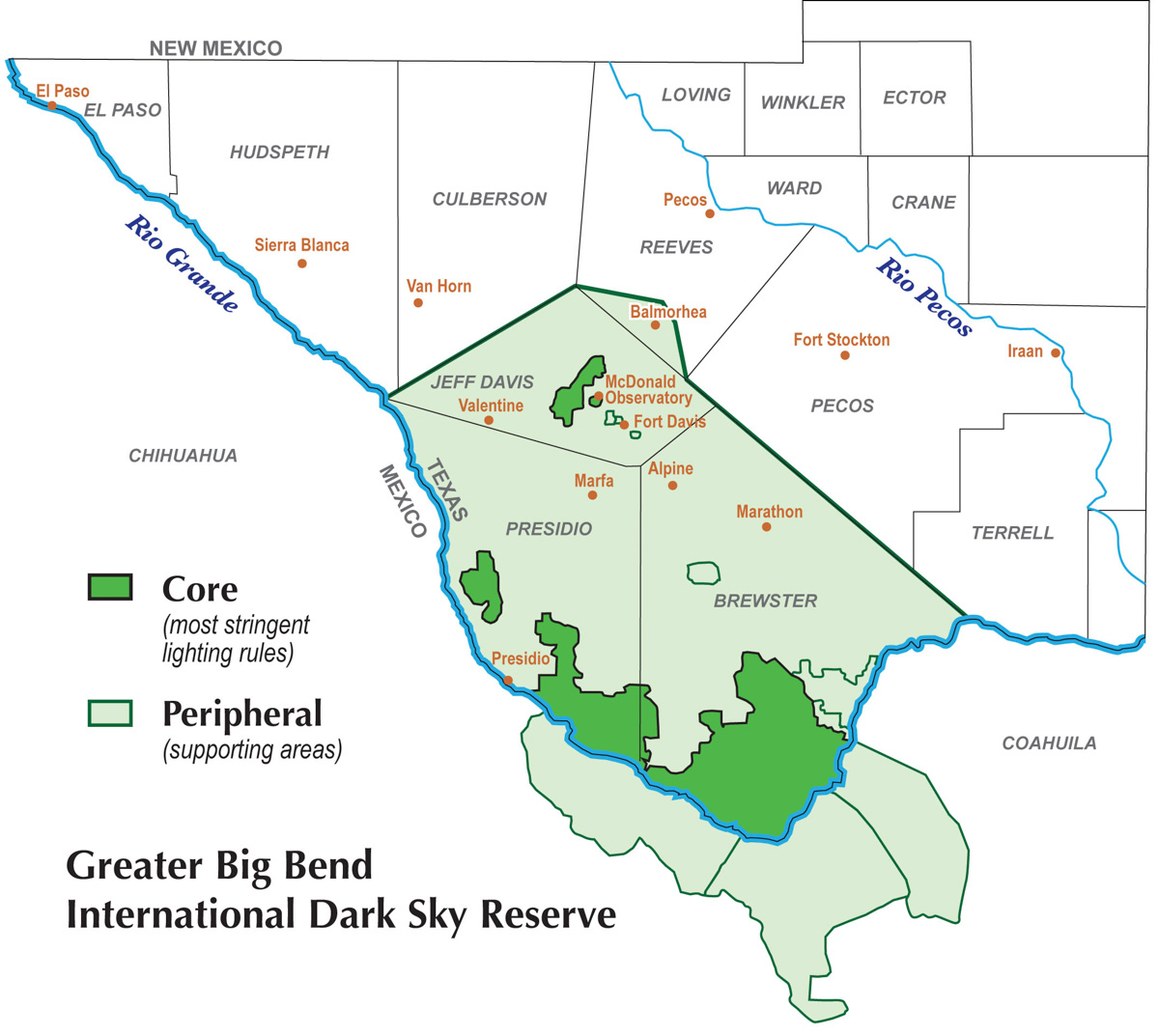
West Texas Communities Protect Night Skies
FORT DAVIS, Texas — The dark skies of far West Texas may soon get even darker, thanks to commitments from communities in the region to reduce light pollution. McDonald Observatory wishes to thank the counties and municipalities in the proposed Greater Big Bend International Dark Sky Reserve; all have now adopted new outdoor lighting ordinances. These are Brewster, Jeff Davis, Presidio, and Reeves counties, and the cities of Alpine, Balmorhea, Marfa, Presidio, and Valentine. The new ordinances aim to encourage the use of better lighting techniques that keep light on the ground and out of the sky.
“It is inspiring to see how the communities of West Texas have come together to enact these new lighting ordinances, helping to protect dark West Texas skies for astronomy, ecology, and natural enjoyment,” said McDonald Observatory Director Taft Armandroff.
Outdoor lighting ordinances have existed in the region for decades. They are intended to protect the dark night skies for astronomical research at McDonald Observatory. The new ordinances bring the language of these ordinances up to the standards of the International Dark Sky Association, and include updates to address advances in lighting technology.
The changes are a crucial step toward completion of the proposed dark sky reserve, which would be the largest of its kind in the world at over 9.8 million acres in Texas and Mexico. The reserve would not only help to protect views of the night sky, but also protect wildlife, improve safety and visibility in local communities, and reduce energy waste.
The ordinance encourages the following four steps for night-sky friendly lighting practices:
- Shielding: Lights should be aimed down at the ground, and shielded such that the source of light is not visible from above or from off the property.
- Color: Light sources should have a color temperature of 2,700K or below (warm white/amber). Harsh blue or white colors should be avoided.
- Intensity: Lights should not emit more light than is necessary.
- Timing: Lights that are not in use, such as business signs or decorative lights, should be turned off after hours, put on a timer to turn off automatically, or only activated by a motion sensor.
McDonald Observatory will host a virtual town hall for local residents on August 12 at 6 p.m. CDT on its YouTube channel. Hosts will discuss the ongoing reserve project, how it will benefit the region, the recent ordinance changes, and answer questions. Watch on YouTube: http://youtube.com/McDonaldObservatory
Copies of outdoor lighting ordinances in the region are available on the observatory’s dark skies resources webpage: https://mcdonaldobservatory.org/dark-skies-resources












